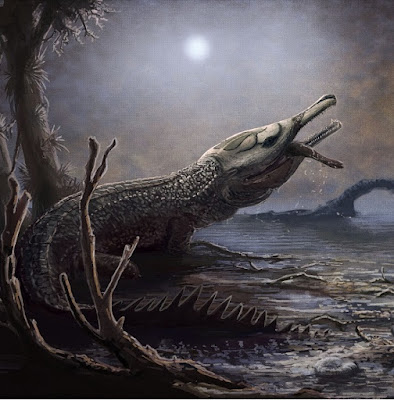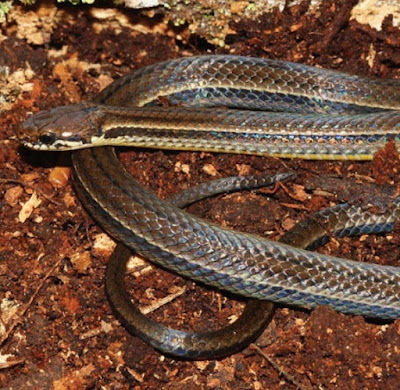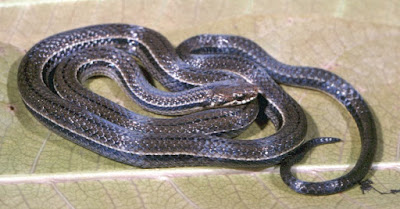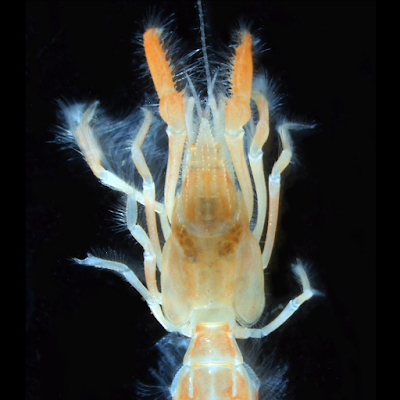[Most Recent Entries] [Calendar View]
Sunday, September 3rd, 2017
| Time | Event | ||||
| 7:37a | [Paleontology • 2017] Lemmysuchus obtusidens • Re-description of ''‘Steneosaurus’ obtusidens'' Andrews, 1909, An Unusual Macrophagous Teleosaurid Crocodylomorph from the Middle Jurassic of England
Abstract Teleosaurids were a clade of crocodylomorphs that attained near-global distribution during the Jurassic Period. Within Teleosauridae, one particular sub-clade of durophagous/macrophagous taxa achieved large body sizes and were apex predators in shallow marine environments during the Late Jurassic and Early Cretaceous in Europe and around the coast of the Tethys Seaway. Unfortunately, the origins of this clade are still poorly understood. ‘Steneosaurus’ obtusidens is a little-studied macrophagous species from the Oxford Clay Formation (Callovian, Middle Jurassic) of the UK and near Migné-les-Lourdines (Middle Callovian) in France. Despite being considered a sister taxon of the Late Jurassic taxon Machimosaurus, the taxonomy of ‘S.’ obtusidens remains unclear. Although three different synonymies have been proposed (variously a subjective synonym of other taxa), these taxonomic hypotheses have not been based on detailed anatomical comparisons and thus have not been tested. Here, we re-describe the holotype of ‘S.’ obtusidens, demonstrate that it is indeed a valid taxon, restrict the referred specimens to a fragmentary skeleton, nearly complete skull, and partial rostrum, and establish a new monotypic genus, Lemmysuchus. Our re-description reveals five autapomorphies for Lemmysuchus obtusidens and nine apomorphic characters that support the tribe Machimosaurini (Lemmysuchus + Machimosaurus). Keywords: Crocodylomorpha, Lemmysuchus, Machimosaurus, Steneosaurus, Teleosauridae, Thalattosuchia Michela M. Johnson, Mark T. Young, Lorna Steel, Davide Foffa, Adam S. Smith, Stéphane Hua, Philipe Havlik, Eliza A. Howlett and Gareth Dyke. 2017. Re-description of ''‘Steneosaurus’ obtusidens'' Andrews, 1909, An Unusual Macrophagous Teleosaurid Crocodylomorph from the Middle Jurassic of England. Zoological Journal of the Linnean Society. in press. DOI: 10.1093/zoolinnean/zlx035 Late Motorhead singer 'Lemmy' has extinct crocodile named after him japantimes.co.jp/news/2017/08/09/world/s | ||||
| 7:45a | [Herpetology • 2017] Rhadinella lisyae • A New Species of Rhadinella (Serpentes: Dipsadidae) from the Sierra de Agalta, Honduras Abstract I describe a new species of dipsadine snake of the genus Rhadinella from an isolated mountain range in east-central Honduras. This population previously was identified as R. lachrymans. Based on morphological similarities, the closest relative of the new species apparently is R. lachrymans. The new species differs from R. lachrymans by the presence of a distinct, complete, white line that borders the upper edge of a dark brown lateral stripe, a dark brown postorbital bar or spot that is separated from the orbit, in reaching a longer adult male size, and the presence of fewer subcaudal scales in males. All known localities for R. lachrymans are from pine-oak forest on or near the Pacific versant of Guatemala and Chiapas, Mexico. Conversely, the new species occurs in broadleaf rainforest, including elfin forest, on the Atlantic versant of Honduras. In addition, the nearest known locality for R. lachrymans is approximately 500 km to the west from that of the new species, and thus geographical distribution and ecological requirements support the representation of two species. Key Words: Atlantic versant, Babilonia Mountain, Department of Olancho, external morphology, Rhadinaea godmani group
Distribution and habitat: Rhadinella lisyae is known from broadleaf rainforest and elfin forest (Premontane Wet Forest and Lower Montane Wet Forest formations; Holdridge, 1967) at elevations from 1,300 m to 2,290 m, and only from the Sierra de Agalta in east-central Honduras (Fig. 5). ... Etymology: The specific name lisyae is a matronym for my daughter Lisy, who has never shown fear of small non-venomous snakes and enjoys holding them. James R. McCranie. 2017. A New Species of Rhadinella (Serpentes: Dipsadidae) from the Sierra de Agalta, Honduras. Mesoamerican Herpetology. 4(3); 244–253. Resumen: Describo una nueva especie de la serpiente dipsadina del género Rhadinella de una cadena montañosa aislada en el este-centro de Honduras. Esta población previamente fue identificada como R. lachrymans. Basándose en similaridades morfológicas, el pariente más cercano de la nueva especie aparentemente es R. lachrymans. La nueva especie se difiere de R. lachrymans por la presencia de una línea blanca distinta y completa que bordea el borde superior de la franja lateral de color café oscuro, una barra postorbital de color café oscuro que está separada de la órbita, en alcanzar un mayor tamaño en los varones adultos, y en tener menos escamas subcaudales en los machos. Todas las localidades conocidas para R. lachrymans son de bosque de pino-encino en o cerca de la vertiente del Pacifico de Guatemala y Chiapas, México. Al contrario, la nueva especie ocurre en la selva tropical de hoja ancha, incluyendo el bosque enano, en la vertiente del Atlántico de Honduras. Además, la localidad más cercana conocida para R. lachrymans está aproximadamente a 500 km al oeste de la nueva especie, y por lo tanto la distribución geográfica y los requisitos ecológicos apoyan la representación de dos especies. Palabras Claves: Departamento de Olancho, grupo de Rhadinaea godmani, Montaña de Babilonia, morfología externa, vertiente del Atlántico | ||||
| 9:39a | [Crustacea • 2017] Gebiacantha sagamiensis • A New Species of Upogebiid Shrimp (Decapoda: Gebiidea) from Sagami Bay, central Japan
Abstract A new species of the upogebiid shrimp genus Gebiacantha Ngoc-Ho, 1989, Gebiacantha sagamiensis, is described and illustrated on the basis of a single male specimen collected from Sagami Bay, central Japan, at depths of 101-106 m. It appears closest to G. reunionensis Ngoc-Ho, 1989, known only from La Réunion, western Indian Ocean, but the different shape of the pleomere 6 and the better developed armature of the pereopod 1 carpus distinguish the new species from G. reunionensis. Comments on the taxonomic status of Gebiacantha and Paragebicula Sakai, 2006, and on the generic assignment of the new species, are given. Keywords: Gebiacantha reunionensis, generic assignment, Paragebicula, Crustacea, Japan Family Upogebiidae Genus Gebiacantha Ngoc-Ho, 1989 Gebiacantha sagamiensis n. sp. [New Japanese name: Sagami-toge-ana-jyako] Etymology. The specific name refers to Sagami Bay, the location embracing the type locality.
Komai Tomoyuki. 2017. Gebiacantha sagamiensis, A New Species of Upogebiid Shrimp (Crustacea: Decapoda: Gebiidea) from Sagami Bay, central Japan. Zootaxa. 4263(3); 578–586. DOI: 10.11646/zootaxa.4263.3.9 |
| << Previous Day |
2017/09/03 [Calendar] |
Next Day >> |












